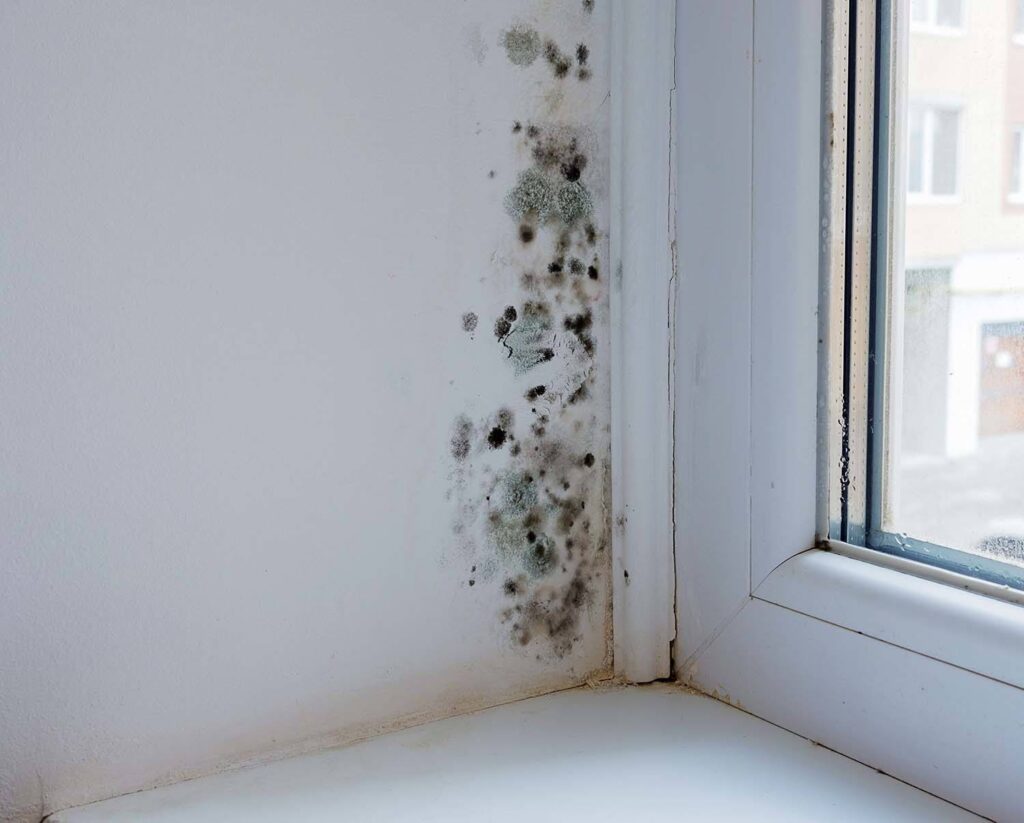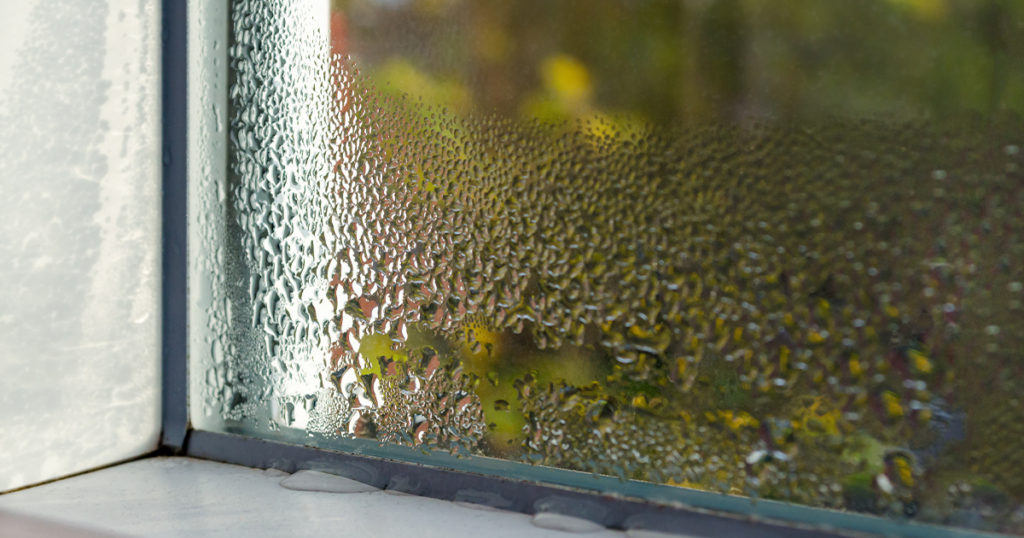In Canadian homes, window condensation is not just a seasonal annoyance; it’s a puzzle made up of various environmental and lifestyle factors. This article explores the causes of this common issue, shedding light on why it’s essential to tackle it effectively. We’ll delve into the science behind condensation, the unique Canadian climate’s role, and how our daily activities contribute to this phenomenon. Understanding these aspects is crucial, as unchecked condensation can lead to more severe issues, from property damage to health risks. So, let’s embark on a journey to demystify window condensation and discover practical solutions to keep our homes safe and comfortable.
The Basics of Window Condensation
Understanding window condensation begins with a simple principle: warm air meets a cold surface, resulting in moisture. This process is especially prevalent in Canadian climates due to the stark contrast between indoor and outdoor temperatures. When the warm, humid air inside our homes hits the cooler surface of a window, it cools down rapidly, and its capacity to hold moisture decreases, leading to water droplets forming on the glass. This is more than just a matter of foggy windows; it’s a sign of the air’s moisture content in our homes and the efficiency of our windows in insulating us from outside temperatures.
Importance of Addressing Condensation in Homes

Ignoring condensation can lead to a host of problems, from minor inconveniences to major structural damages. It’s crucial for Canadian homeowners to understand and mitigate these risks. Persistent condensation can lead to mold growth, which not only damages the window frames but also poses health risks. Moreover, excessive moisture can peel paint, warp wood, and even infiltrate walls, causing more extensive damage. Addressing condensation is not just about maintaining clear windows; it’s about preserving the health and integrity of our homes.
The Science Behind Condensation
At its core, condensation is a scientific phenomenon. This section delves into the roles temperature, humidity, and air circulation play in creating condensation on your windows. Temperature differences inside and outside your home create the perfect conditions for condensation. Humidity, both outdoor and indoor, exacerbates this effect, as higher humidity means more moisture in the air, leading to more condensation. Air circulation, or the lack thereof, also plays a critical role. Homes with poor ventilation often see more condensation as moist air gets trapped inside.
How Temperature Variations Contribute
Temperature differences are a primary cause of condensation. In Canada, the drastic seasonal temperature shifts significantly affect how and when condensation occurs. During the cold months, the exterior of the window is much colder than the interior, leading to condensation as the warm interior air cools against the cold glass. Similarly, during humid summers, the reverse can happen if the inside of the house is cooler than the outside. Understanding this dynamic is key to managing condensation effectively.
The Role of Humidity in Window Condensation
Humidity plays a crucial role in the formation of condensation. This part examines how indoor and outdoor humidity levels interact to create moisture on windows. High humidity levels, common in Canadian summers, increase the amount of moisture air can hold. When this moist air comes into contact with a cooler surface, like a window, it releases some of this moisture as condensation. In winter, indoor activities like cooking and showering can increase indoor humidity, exacerbating the issue.
Air Circulation and Its Impact
Proper air circulation is key in preventing condensation. This section explores how ventilation affects moisture accumulation on windows. Good ventilation helps to circulate the air in your home, reducing the chances of humid air settling on cooler surfaces. Inadequate ventilation traps moist air inside, leading to more significant condensation issues. Ensuring that your home is well-ventilated, particularly in areas like kitchens and bathrooms where humidity tends to be higher, is crucial.
Common Causes in Canadian Climates

Canada’s unique climate presents specific challenges. Here, we explore the typical weather patterns and architectural factors that contribute to window condensation in Canadian homes. The country’s diverse climate, with its cold winters and warm, humid summers, creates a perfect storm for condensation issues. Additionally, the architectural design of Canadian homes, which often includes large windows for natural light, can also contribute to the problem.
Weather Patterns and Their Influence
From freezing winters to humid summers, Canadian weather significantly influences condensation. This section explains how. The drastic temperature shifts between seasons in Canada mean that homes must be equipped to handle a wide range of conditions. In winter, heated indoor air full of moisture contrasts sharply with the cold, dry outside air, leading to condensation on windows. Conversely, in summer, air conditioning can create a reverse effect, with cooler indoor temperatures leading to condensation on the exterior of windows.
Architectural Factors in Canadian Homes
The design and construction of Canadian homes can either exacerbate or mitigate condensation issues. Here we look at how architectural choices impact condensation. Features like double-glazing and proper insulation can significantly reduce condensation by maintaining a more consistent temperature on the window’s surface. Conversely, older homes with single-pane windows or poor insulation may experience more condensation due to greater temperature disparities.
Lifestyle and Daily Activities
Daily activities like cooking and showering add to the moisture level in homes. This section covers how everyday life contributes to window condensation. Cooking, for example, releases a lot of moisture into the air, especially when boiling water or using a stove. Showering, particularly hot showers, also significantly increases indoor humidity. Even plants, which release moisture into the air, can contribute to the problem. Understanding how our daily routines impact indoor humidity is key to managing condensation.
The Effects of Condensation on Home Integrity

Condensation can have lasting effects on your home’s integrity. This part discusses the potential damage to window structures and the overall health of your home. Prolonged exposure to moisture can lead to the deterioration of window frames, especially if they are made of wood. The moisture can also seep into walls, causing paint to peel and potentially leading to structural damage over time.
Damage to Window Structures
Prolonged exposure to condensation can lead to significant damage. Here we explore what that means for your windows and home. Wooden window frames can rot, metal frames can corrode, and even vinyl frames can become discolored or warped. This damage not only affects the appearance of your home but can also lead to costly repairs and replacements.
Long-Term Impacts on Home Health
Ignoring condensation can have long-term consequences on the overall health of your home. This section covers what homeowners need to be aware of. Beyond the immediate damage to windows, persistent condensation can lead to mold and mildew growth, which not only damages the home’s structure but also poses health risks to its inhabitants. It’s essential to address condensation promptly to maintain a healthy living environment.
Practical Solutions and Prevention Strategies
There are several ways to tackle window condensation. This section provides practical steps and long-term strategies for Canadian homeowners. Simple steps like using dehumidifiers, ensuring adequate ventilation, and keeping the home at a consistent temperature can go a long way. For a more long-term approach, consider investing in double-glazed windows, improving insulation, and using moisture-resistant materials in areas prone to high humidity.
Immediate Steps to Reduce Condensation
Quick fixes can make a big difference. Here, we list some immediate steps you can take to reduce condensation in your home. Strategies like using exhaust fans in kitchens and bathrooms, opening windows briefly for ventilation, and using moisture-absorbing products can provide immediate relief from condensation. Additionally, keeping the home at a consistent temperature and avoiding activities that generate a lot of moisture can help reduce the risk of condensation.
Long-Term Modifications for Prevention

For a more permanent solution, consider these long-term modifications. From upgrading windows to changing heating systems, these changes can help prevent condensation. Investing in energy-efficient windows, like double or triple-glazed units, can significantly reduce condensation by providing better insulation. Improving home insulation, particularly around windows and doors, can also help maintain consistent indoor temperatures and reduce moisture build-up.
Professional Solutions and Services
Sometimes, professional help is needed. This part covers the services and solutions offered by experts in managing condensation. Professional services like home energy audits can identify problem areas and recommend solutions. Additionally, hiring a contractor to upgrade windows or improve insulation can be a worthwhile investment in the long-term health of your home.
Risks of Mold and Mildew
Mold and mildew thrive in moist environments. Here, we discuss the health risks associated with these issues in Canadian homes. These fungi can cause a range of health issues, particularly for those with allergies or asthma. The spores released by mold can be inhaled, leading to respiratory problems and other health concerns. It’s essential to address condensation issues promptly to prevent the growth of mold and mildew.
Comparison Table: Solutions to Window Condensation
| Solution | Advantages (+) | Disadvantages (-) |
| Using Dehumidifiers | Effectively reduces indoor humidity. Portable and easy to use. | Can be costly to run continuously. May not be effective in very large spaces. |
| Improving Ventilation | Reduces moisture buildup. Improves overall air quality. | May lead to heat loss in winter. Requires habit change (opening windows regularly). |
| Installing Double-Glazed Windows | Provides better insulation. Reduces heat loss, saving on energy bills. | High initial installation cost. May require professional installation. |
| Using Exhaust Fans in Kitchen/Bathrooms | Specifically targets high-humidity areas. Easy to install and use. | Limited to localized areas (not a whole-house solution). May require electrical work for installation. |
| Maintaining Consistent Indoor Temperature | Prevents drastic temperature changes that cause condensation. Can improve overall comfort in the home. | May lead to higher energy consumption. Requires a well-functioning heating/cooling system. |
| Upgrading Home Insulation | Improves energy efficiency. Helps maintain consistent indoor temperatures. | Can be costly and invasive to install. May require professional assessment and installation. |
This table provided by Ecoline Windows.
